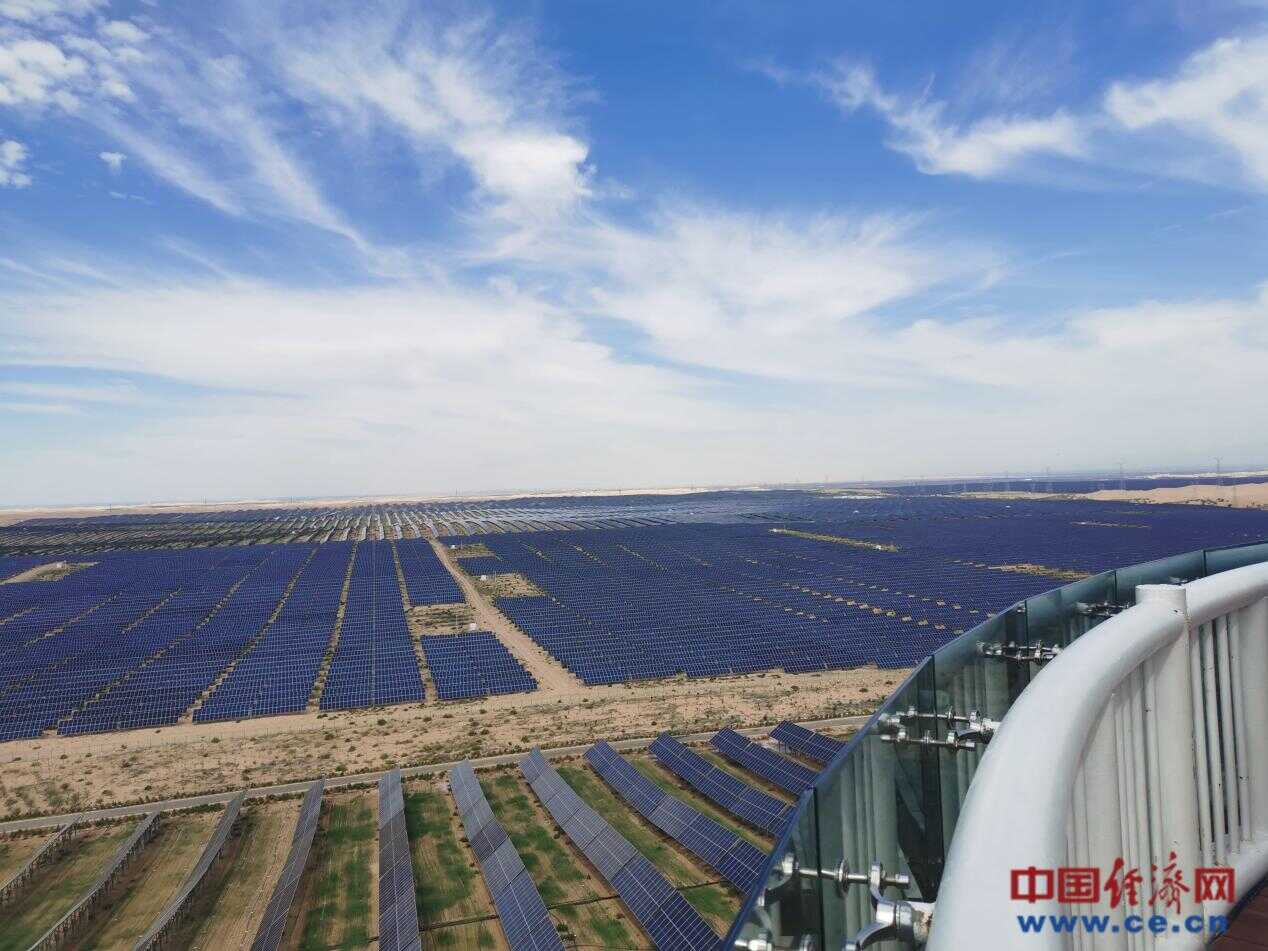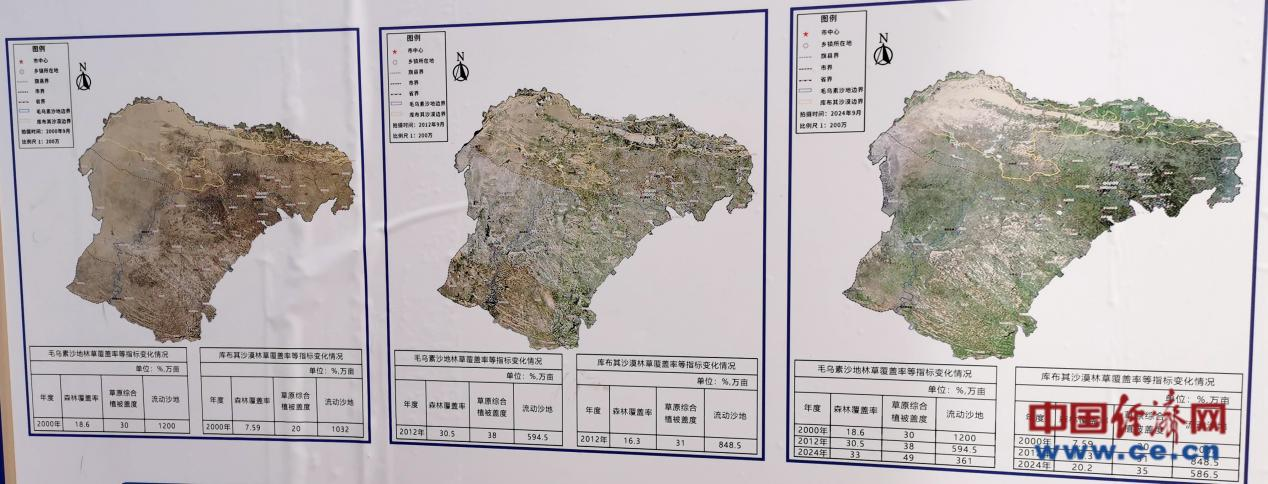by Wang Kai
DALAD, Jul 23 (China Economic Net) - On the edge of the vast Kubuqi Desert in northern China, a quiet revolution is underway. Once dominated by shifting sands and sparse vegetation, this stretch of land in Dalad Banner, Ordos, has transformed into an exemplar of how renewable energy, ecological restoration, and rural development can coexist - and thrive.

The “Solar Great Wall” in Dalad, Inner Mongolia, China covers over 40,000 acres of land. [Photo/China Economic Net]
Featuring bifacial solar panels paired with smart inverters, the arrays of PV modules can absorb heat and reflected light from the sand beneath, boosting energy generation. Operators manage the network remotely through a 5G-powered Huawei AI system, which detects malfunctions in real-time, ensuring efficient maintenance and peak performance.
Beneath the panels, the land is repurposed for planting drought-tolerant crops and pasture grasses, supporting an emerging model of “agrivoltaics” - where agriculture and photovoltaics coexist. Treated wastewater from nearby industrial parks is used to irrigate desert vegetation, further advancing sustainability.
“We're building what we call the ‘Great Solar Wall’ - a 400-kilometer-long, 5-kilometer-wide green energy corridor along the desert belt,” said Li Kai, director of the Comprehensive Energy Center of the Energy Bureau of Dalad Banner, Ordos City. “In Dalad’s section alone, we plan to install over 10 GW of solar capacity.”
By 2030, total renewable capacity is expected to reach 26 GW, placing Dalad among the most significant clean energy hubs in China - and potentially, the world.
Since 2017, Dalad Banner has emerged as a pioneer in integrating large-scale photovoltaic (PV) energy with desertification control. To date, the project has reshaped approximately 42,700 acres of desert. In the first half of 2025 alone, it delivered 3.36 billion kilowatt-hours of green electricity - the equivalent of saving 1.12 million tons of standard coal and cutting 2.772 million tons of carbon dioxide and 756,000 tons of dust emissions.
The environmental gains are mirrored in improved ecological indicators. Vegetation coverage across the region has increased from 17 percent in 2000 to 58.4 percent today. In the Kubuqi Desert specifically, the desertification control rate has dropped from 61 percent to 80 percent restored - a change that is visible even in satellite imagery.

Satellite imagery of Dalad in 2000, 2014, and 2024. [Photo/China Economic Net]
While the region hasn’t yet deployed next-generation perovskite panels at scale, several pilot technologies - including solar glass that doubles as building material - are already under testing.
The latest panels deployed are 30 times more efficient and 40 times better at power storage. And thanks to technological advances, the cost of solar has plummeted. “Ten years ago, solar power cost over 1 yuan per kWh. Today, it’s less than 0.5 yuan,” said Li. “Our investment recovery cycle has shrunk from 15 years to 11 years - and still improving.”
Electricity generated in Dalad doesn’t just stay local. A dedicated ±800kV ultra-high-voltage (UHV) transmission line now delivers power directly to Beijing, Tianjin, and Hebei — including the Xiong’an New Area.
“At one point, it was said that every fifth lights in Beijing’s households was lit by Dalat power,” noted Li. “A few years later, it could be every third.”
(Editor: wangsu )


